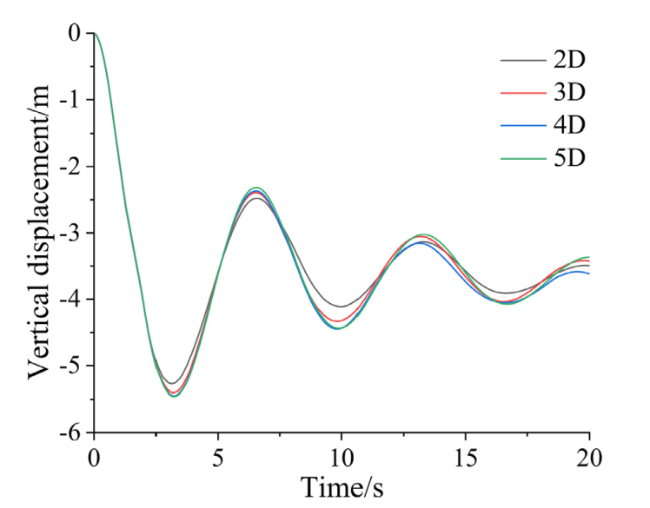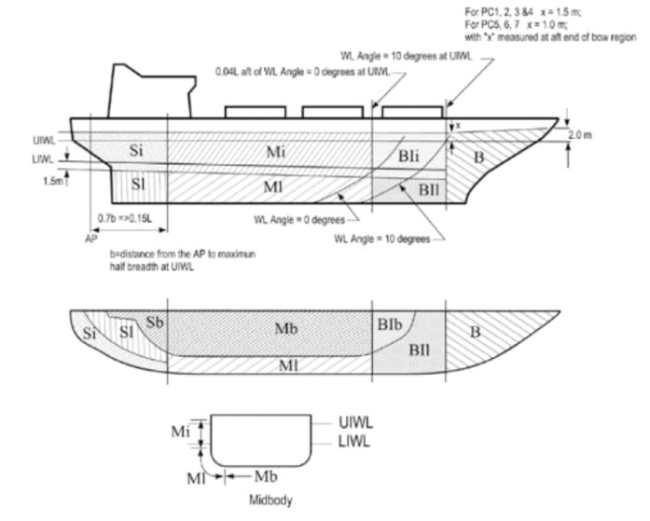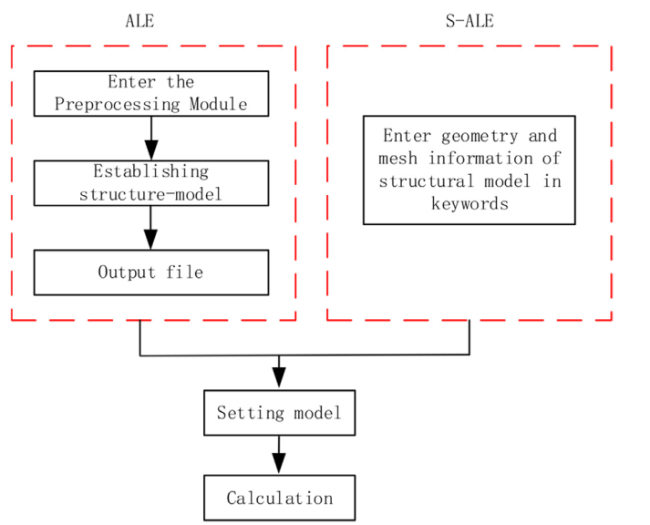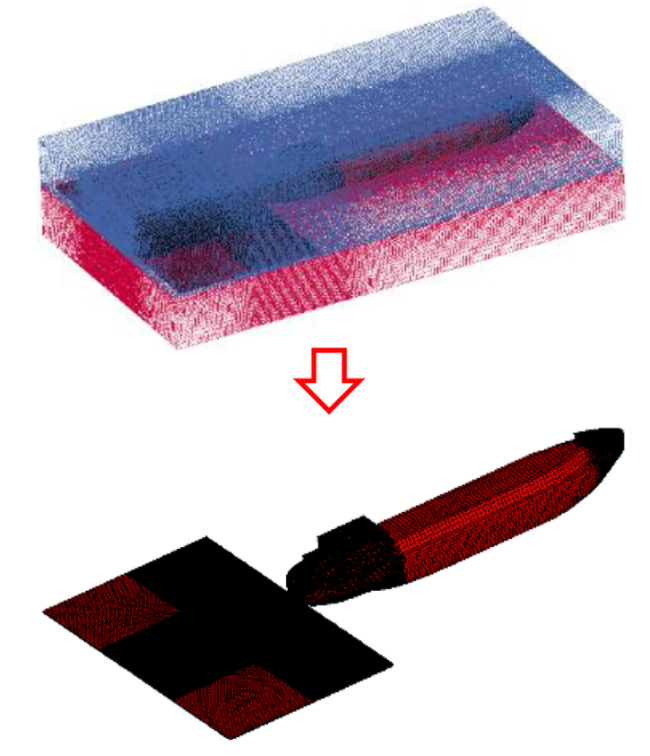For the numerical calculation methods of ship-ice collision-induced vibrations, researchers have only considered the effects of the attached water mass and ignored hydrodynamic loads in the early stages of the ship-ice collision problem. Kim [
8] simulated a continuous ship-level ice collision using the attached water mass method and investigated the effects of different speeds and ice thicknesses on the ice load. Kwak [
9] analyzed the structural strength and ice mechanical properties of ship-ice collisions through the constantly added mass method to MS_DYTRAN and compared them with the experimental data. Tian [
10] calculated and analyzed the constantly added mass model in ship-bridge collision simulation. Pedersen [
11] evaluated the effect of water using the constantly added mass method. Then, the energy losses of ship-ship collisions and ship-platform collisions were studied by an analytical method and compared with the energy losses of time-domain simulations. Yamada [
12] analyzed the force and energy during a ship-ship collision that used the same process as Pedersen and compared it with the force and energy obtained from FEA. However, the constantly added mass method tends to ignore the effects of fluid resistance and object buoyancy, which affects the accuracy of ice load prediction. Therefore, two methods have been proposed for buoyancy simplification and fluid-structure coupling as researchers gradually consider the influence of fluid. Liu [
13] simulated the ship-ice interaction process by introducing near-field dynamics to calculate ice loads without considering the gravity and buoyancy of the ice. Lubbad [
14] simplified the buoyancy of level ice in a spring distribution at the bottom of the level ice. Wang [
15] used LS_DYNA software to simulate the interaction of slope marine structures with level ice, but only the initial part of the ice-structure interaction was simulated. NI [
16] considered the effect of fluids on ship-ice interactions using a fluid-structure coupling method. The validity and reliability of the simulation were determined by comparing numerical results with empirical formulations and comparing the longitudinal, lateral, and vertical ice resistance of the vessel with and without fluid conditions. Song [
17] compared the results of the fluid-structure coupling method, the constantly added mass method, and an experimental method for collisions between ice and floating structures in LS_DYNA. It was found that there is a difference between the fluid-structure coupling method and the constantly added mass method due to the effects of bow waves. According to the comparison of the experimental method, the fluid-structure coupling method can better simulate the real collision process. Other researchers [
18⇓-
20] have carried out measurements and analyses of ice-induced vibrations on icebreakers to study the vibration comfort of full-scale ships. Wen [
21] used the virtual modal method to calculate the transient noise analysis of a ship undergoing an ice floe collision, but it assumed the collision force as a triangular force and did not use the actual ice load. It can be seen in the above research that the constantly added mass method and fluid-structure interaction method are mainly used in the study of ship-ice collisions. Among them, the constantly added mass method considers the mass of the attached water, which has the advantages of a small calculation scale and fast calculation speed. However, because the fluid is not considered, the time of the peak in the early calculation results will be shifted forward, and the later peak will be significantly larger [
22⇓⇓-
25]. Compared with the constantly added mass method, the fluid-structure interaction method has greater advantages. It can consider the influence of fluid resistance and obtain more accurate results. However, its disadvantage is that the calculation scale is obviously greater than the constantly added mass method, and it is difficult to simulate ship-ice collisions with level ice scales reaching 100 m or more. Researchers have mostly used ship-ice-water coupling when using the fluid-structure interaction method to analyze ship-ice collisions and have ignored air coupling. Although the ship-ice-water coupling method considers the fluid influence and improves the calculation accuracy, its disadvantage is that the buoyancy of the object cannot be considered [
16,
17]. The ship-ice-water‒air coupling method cannot only consider the fluid influence but also apply the correct buoyancy and reduce the calculation scale on the basis of the S-ALE algorithm. This is of great significance to the analysis of ship-ice collision-induced vibration. At present, there are few numerical analysis studies on the ship-ice collision-induced vibration response. Some numerical studies have simplified the ice load and water as triangular forces and constantly added mass but have not achieved accurate vibration prediction. Consequently, it is necessary to solve the ship-ice-water‒air full coupling problem, improve the calculation accuracy and reduce the difficulty of calculating large-scale fluid-structure interactions.




























